Quantitative and descriptive comparison of four acoustic analysis systems: vowel measurements
- PMID: 24687465
- PMCID: PMC3972630
- DOI: 10.1044/1092-4388(2013/12-0103)
Quantitative and descriptive comparison of four acoustic analysis systems: vowel measurements
Abstract
Purpose: This study examines accuracy and comparability of 4 trademarked acoustic analysis software packages (AASPs): Praat, WaveSurfer, TF32, and CSL by using synthesized and natural vowels. Features of AASPs are also described.
Method: Synthesized and natural vowels were analyzed using each of the AASP's default settings to secure 9 acoustic measures: fundamental frequency (F0), formant frequencies (F1-F4), and formant bandwidths (B1-B4). The discrepancy between the software measured values and the input values (synthesized, previously reported, and manual measurements) was used to assess comparability and accuracy. Basic AASP features are described.
Results: Results indicate that Praat, WaveSurfer, and TF32 generate accurate and comparable F0 and F1-F4 data for synthesized vowels and adult male natural vowels. Results varied by vowel for women and children, with some serious errors. Bandwidth measurements by AASPs were highly inaccurate as compared with manual measurements and published data on formant bandwidths.
Conclusions: Values of F0 and F1-F4 are generally consistent and fairly accurate for adult vowels and for some child vowels using the default settings in Praat, WaveSurfer, and TF32. Manipulation of default settings yields improved output values in TF32 and CSL. Caution is recommended especially before accepting F1-F4 results for children and B1-B4 results for all speakers.
Figures


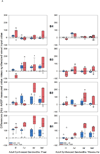

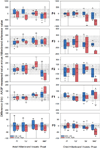
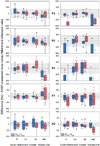
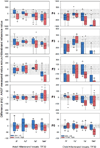
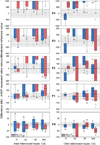
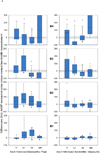

Similar articles
-
Optimizing Vowel Formant Measurements in Four Acoustic Analysis Systems for Diverse Speaker Groups.Am J Speech Lang Pathol. 2016 Aug 1;25(3):335-54. doi: 10.1044/2015_AJSLP-15-0020. Am J Speech Lang Pathol. 2016. PMID: 26501214 Free PMC article.
-
Source and Filter Acoustic Measures of Young, Middle-Aged and Elderly Adults for Application in Vowel Synthesis.J Voice. 2024 Mar;38(2):253-263. doi: 10.1016/j.jvoice.2021.08.025. Epub 2021 Oct 28. J Voice. 2024. PMID: 34756498
-
A Comparison of Healthy and Disordered Voices Using Multi-Dimensional Voice Program, Praat, and TF32.J Voice. 2024 Jul;38(4):963.e23-963.e38. doi: 10.1016/j.jvoice.2022.01.010. Epub 2022 Mar 1. J Voice. 2024. PMID: 35246346
-
Static measurements of vowel formant frequencies and bandwidths: A review.J Commun Disord. 2018 Jul-Aug;74:74-97. doi: 10.1016/j.jcomdis.2018.05.004. Epub 2018 Jun 1. J Commun Disord. 2018. PMID: 29891085 Free PMC article. Review.
-
Perceptual confusions of high-pitched sung vowels.J Voice. 2000 Jun;14(2):287-98. doi: 10.1016/s0892-1997(00)80038-7. J Voice. 2000. PMID: 10875582 Review.
Cited by
-
Acoustic assessment in mandarin-speaking Parkinson's disease patients and disease progression monitoring and brain impairment within the speech subsystem.NPJ Parkinsons Dis. 2024 Jun 12;10(1):115. doi: 10.1038/s41531-024-00720-3. NPJ Parkinsons Dis. 2024. PMID: 38866758 Free PMC article. Review.
-
Conducting high-quality and reliable acoustic analysis: A tutorial focused on training research assistants.J Acoust Soc Am. 2024 Apr 1;155(4):2603-2611. doi: 10.1121/10.0025536. J Acoust Soc Am. 2024. PMID: 38629881 Free PMC article.
-
Effect of body position on vocal tract acoustics: Acoustic pharyngometry and vowel formants.J Acoust Soc Am. 2015 Aug;138(2):833-45. doi: 10.1121/1.4926563. J Acoust Soc Am. 2015. PMID: 26328699 Free PMC article.
-
Corner vowels in males and females ages 4 to 20 years: Fundamental and F1-F4 formant frequencies.J Acoust Soc Am. 2019 Nov;146(5):3255. doi: 10.1121/1.5131271. J Acoust Soc Am. 2019. PMID: 31795713 Free PMC article.
-
Comparison of Praat and Computerized Speech Lab for formant analysis of five Japanese vowels in maxillectomy patients.Front Neurosci. 2023 Feb 1;17:1098197. doi: 10.3389/fnins.2023.1098197. eCollection 2023. Front Neurosci. 2023. PMID: 36816122 Free PMC article.
References
-
- Baken RJ, Orlikoff RF. Clinical Measurement of Speech & Voice (Speech Science) 2 ed. San Diego: Singular; 1999.
-
- Bielamowicz S, Kreiman J, Gerratt BR, Dauer MS, Berke GS. Comparison of voice analysis systems for perturbation measurement. Journal of Speech and Hearing Research. 1996;39:126–134. - PubMed
-
- Boersma P, Weenink D. Praat (5.1.32) Amsterdam, The Netherlands: Publisher; 2010. Available from http://www.fon.hum.uva.nl/praat.
-
- Fant CG. Descriptive analysis of the acoustic aspects of speech. Logos. 1962;5:3–17. - PubMed
-
- Fourakis M, Preisel C, Hawks JW. Perception of vowel stimuli synthesized with different fundamental frequencies. Journal of the Acoustical Society of America. 1998;104:1778.
Publication types
MeSH terms
Grants and funding
LinkOut - more resources
Full Text Sources
Other Literature Sources

